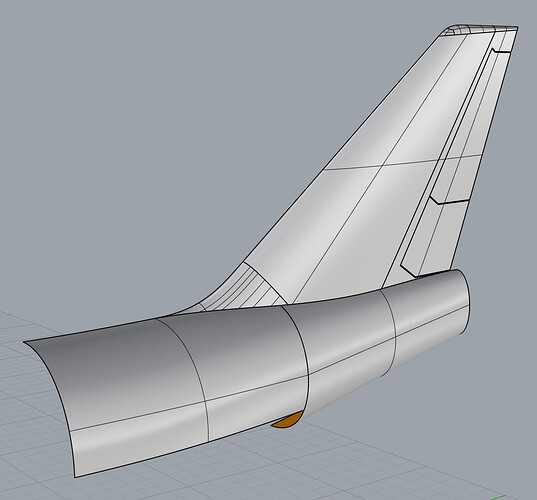I modelled the 747-121 a few years ago, as an exercise to improve my skills with point manipulation, surface matching etc. The most challenging part was working outwards from the planar cockpit side glass. Using match surface with history enabled was quite useful when resolving this area.
Modelled in Rhino 6, rendered in Lightwave using Octane.
It looks great! The hangar would be even more convincing if it had a little clutter. : )
Impressive. Truly fine work.
Ha yeah it would!
Super cool! Is the hangar a model?
Yep it is. I must confess that I ran out of steam on this project and ended up sourcing the hangar and undercarriage from Turbosquid or some other marketplace!
The hangar looks good! Do the textures show up properly in Rhino 7? Asking for a friend…
It really is an admirable masterwork!
Good job!
How did you create and connect the segments of the fuselage?
I started splitting materials out in Rhino (like the red stripe along the hip) before deciding that was a bad idea and set up the rest in Lightwave, as textures.
Do you mean the narrow vertical panels? They are all texture mapped - bump or displacement maps to emulate the slight wobbles that exist on the panels in reality.
The larger panels (like the sections that are prefabbed then assembled together) that are visible on the shaded viewport image are swept pipes that have been subtracted from the main fuselage. I probably should have left the model clean and added these details via displacement maps in the rendering software.
I did mean all parts ( in the shaded pictures, 11 and 12) that have been divided with wires on the plane. Have you worked in NURBS? How did you create every piece and then linked to other pieces? did you used blend?
Yes, I started adding detail to the model using swept pipes, to add the joins between sections of the fuselage that appear to be modules that are assembled together. Those are the lines you can see in 11 and 12, as well as 13. The base nurbs model is in image 2. This was before I started modelling the wings, wing box etc. I mainly used edgeSrf and matchSrf. Quite a bit of manual point manipulation. I don’t remember using blendSrf on this project.
Thank you so much for the explanations ![]()
Looking at the model again–especially the smoothing and joining is done so well, that you should have a nudge to study aerodynamics, and perhaps take a look at OpenFoam, if you have not done already.
I have not had a look at aerodynamics - I did use the airfoil calculator to give me a rough sections to work with.
Outstanding !

esto es lo mejor quiero aviones de papercraft pero los quiero diseñar yo












